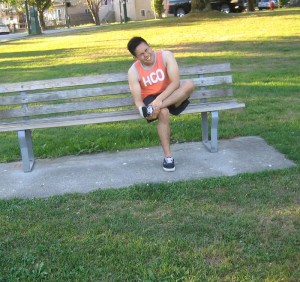Whitlow is a very painful condition that affects the tip of fingers or toes. Whitlow on the toes is not common as on the fingers, but sometimes it can develop, and usually it is the great toe that is affected. Whitlow is caused by bacterial infection and sometimes caused by herpes and fungal infection.
An abscess will develop on the tip of the toe which is very painful and filled with pus. This occurs once the skin of the toe are always moist, thus bacteria will enter through the cracks, fracture or a small injury.
The tip of the affected toe becomes red and shiny while small bumps will develop next to the toenail which causes intense pain. The toe is red and hot with pulsating pain, then after a few days the area turn yellow due to the development of pus. There is also difficulty in walking due to the pain in the affected toe. Sometimes, the individual may experience fever and chills. Antibiotics and anti-inflammatory medications are usually given in the first two days of the treatment in order to prevent pus formation.

Causes of whitlow on the toes
- Whitlow on the toes can be caused by bacterial and fungal infection and also due to a herpes virus. The germs will enter the toe and folds of the nail through a hangnail or some minor injuries.
- Whitlow is common in people with diabetes where their toes are frequently immersed in water. A poor pedicure, a damaged or a diseased nail can allow germs to enter the toes.
- Wearing of tight fitting shoes, an ingrown toenail and people with low immunity are susceptible of developing whitlow.
Treatment and home remedies for whitlow
- Fill a bowl with 50% lukewarm water and add 50% liquid antibacterial soap. Immerse the affected toe in the bowl at least 15 minutes for 3-4 times in a day. This is ideally done immediately after detecting the initial symptom of the infection.
- Fill a bowl with cold water and add a few ice cubes to make the water cold. Add 1 teaspoon of magnesium sulfate powder and wait until fully dissolved. Immerse a clean cloth in the solution and apply it over the affected toe for 10-15 minutes at least three times in a day.
- Apply magnesium paste on the affected area and cover it with lint or cotton wool, then bandage in place. Change the dressing on a daily basis.
- Maintain normal level of blood sugar if the person is diabetic.
- Seek medical help if the symptoms of whitlow still persist.
These measures can help manage the symptoms caused by whitlow. In case the condition persists or seems to worsen, it is best to consult a doctor for proper diagnosis of the condition as well as start the suitable treatment.
